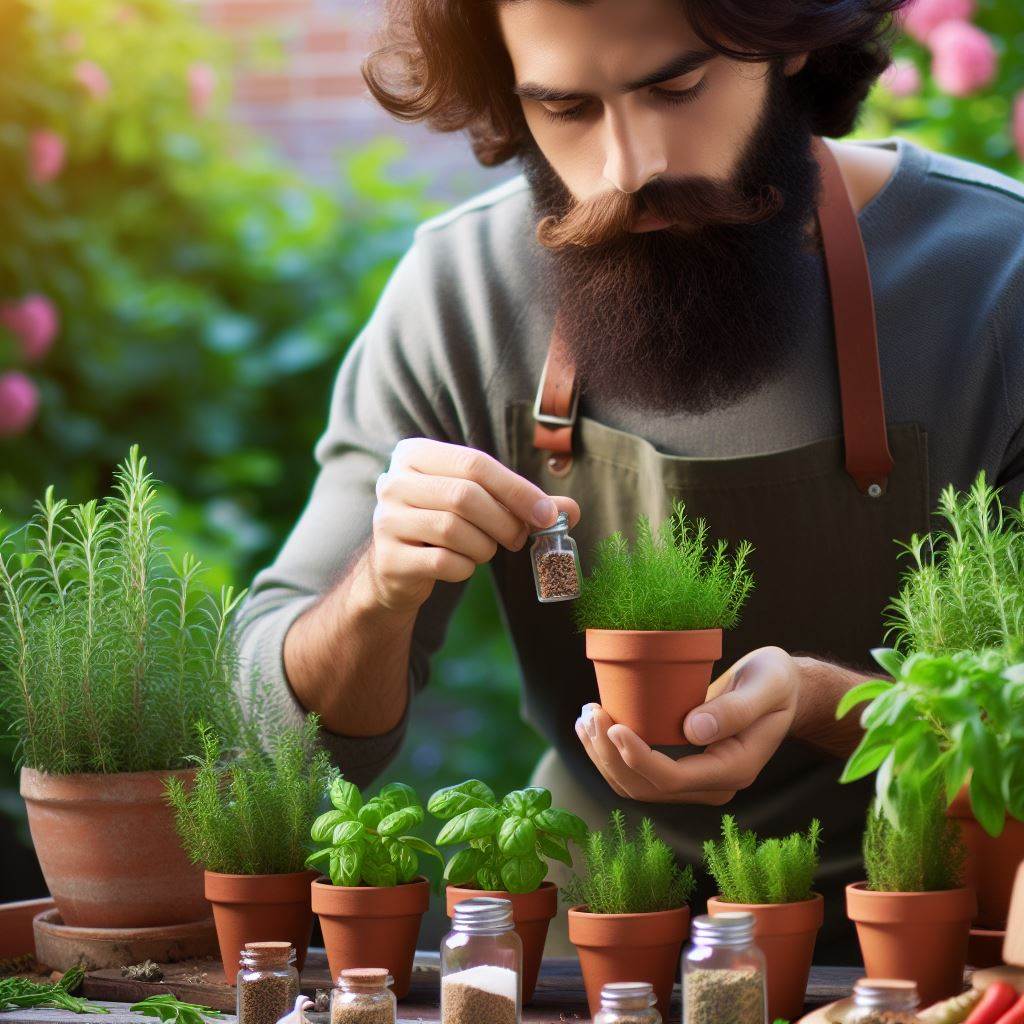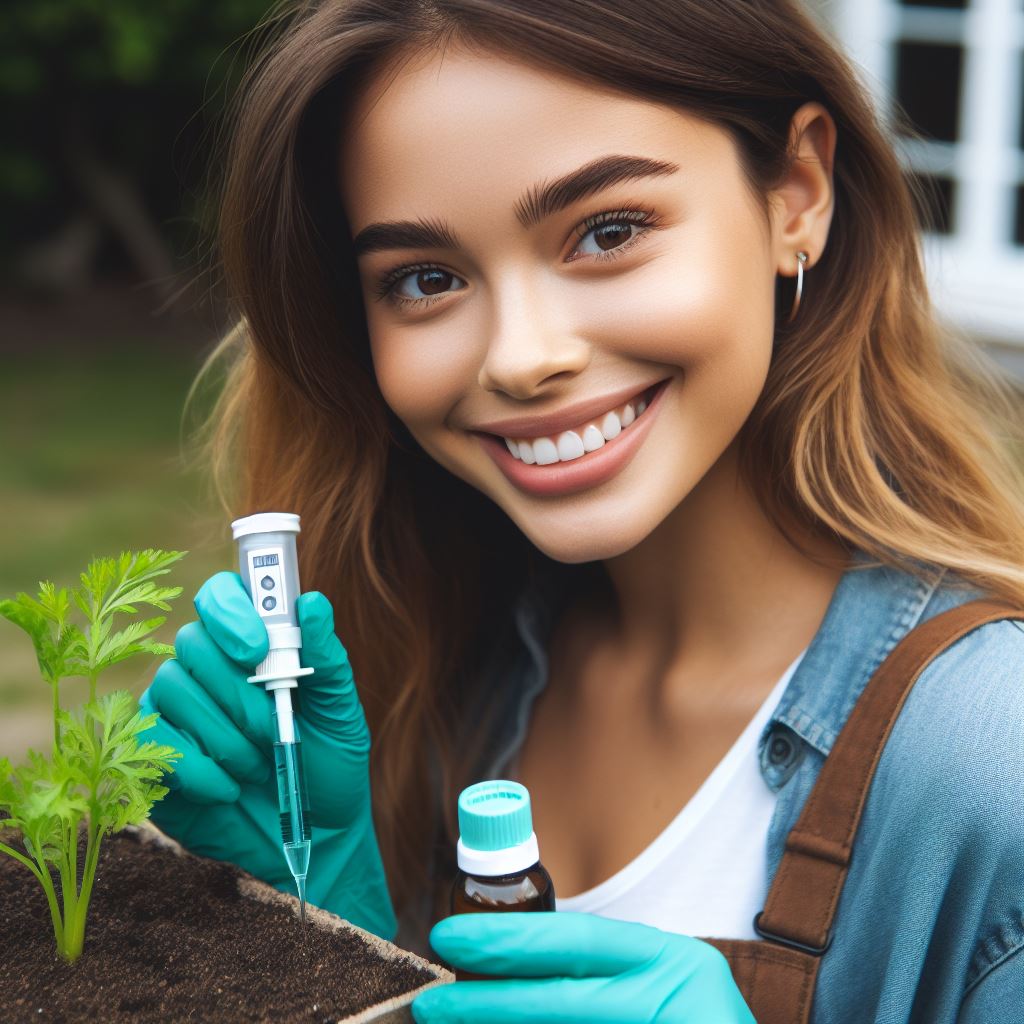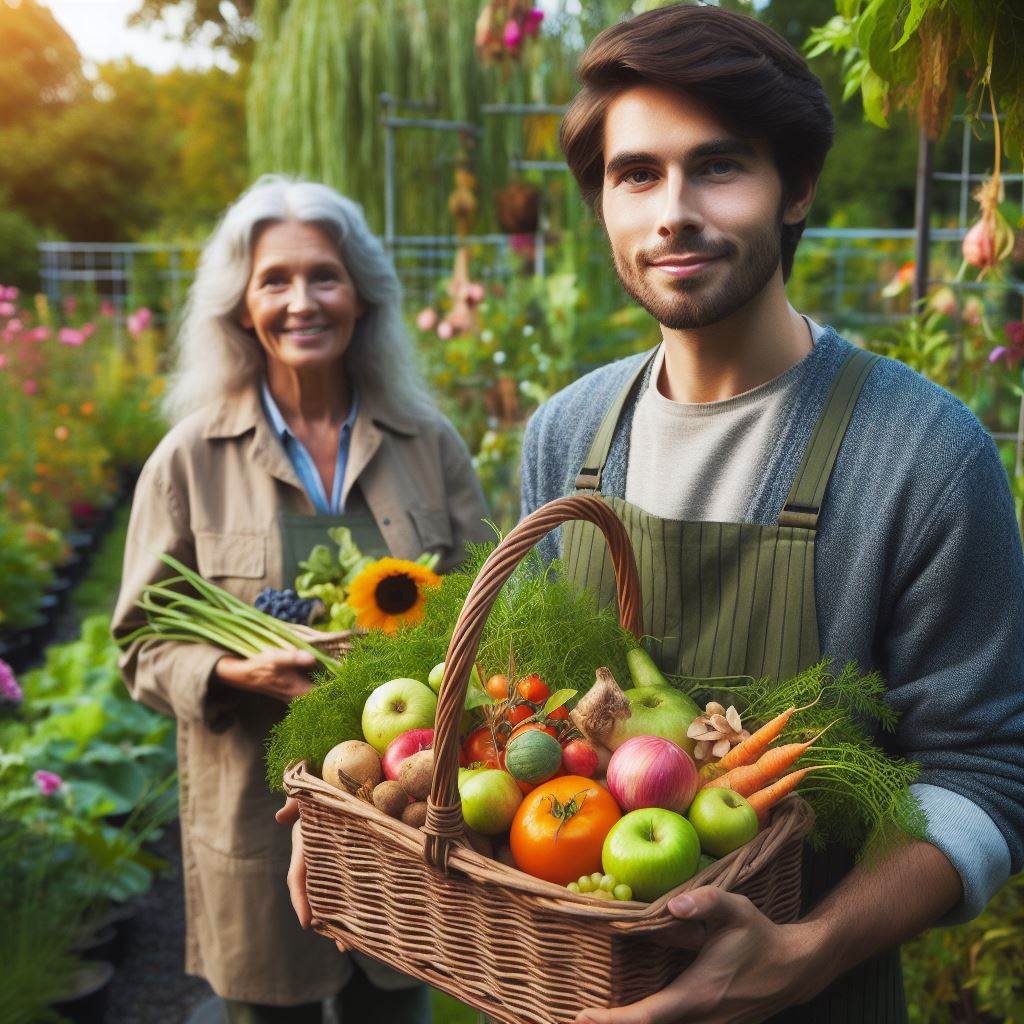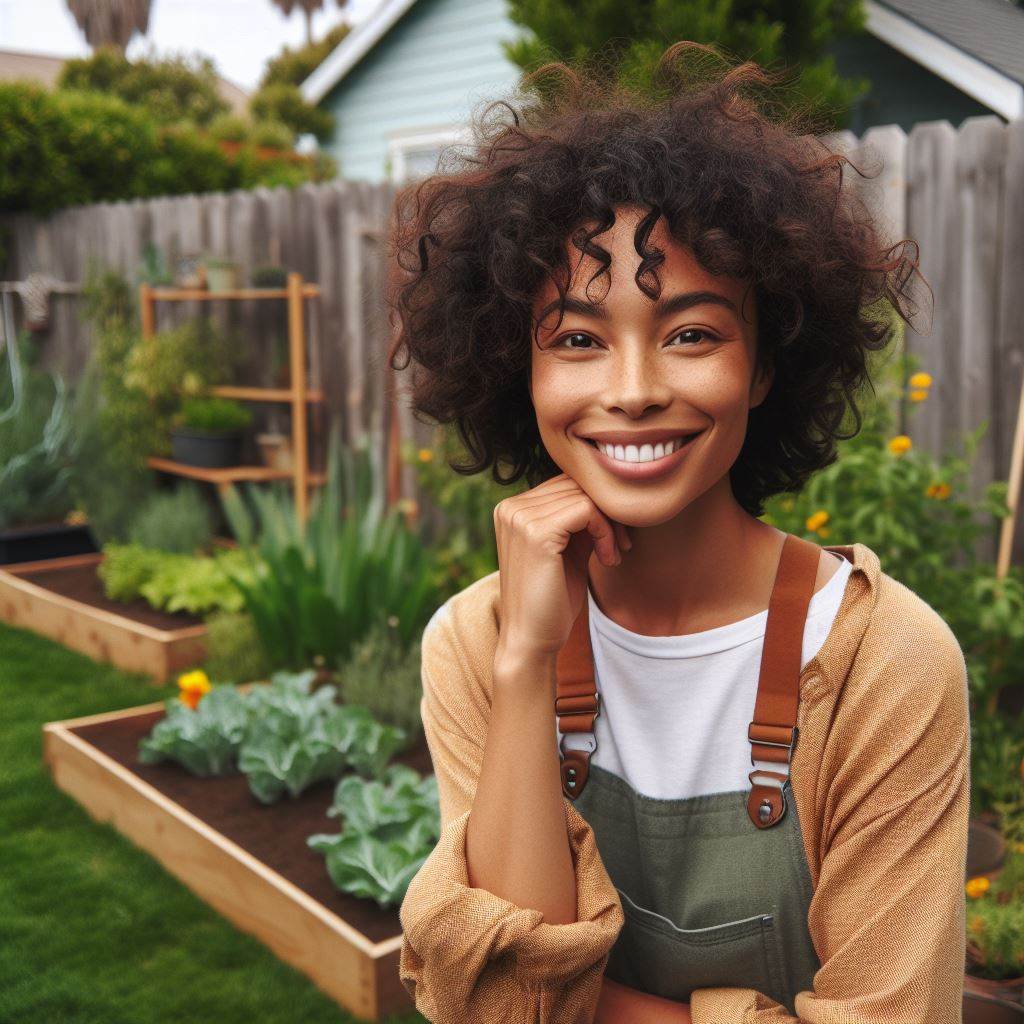Introduction to container gardening
Container gardening is a popular method of growing plants in small spaces. It involves growing plants in containers such as pots, baskets, or even bags.
Container gardening has gained popularity in recent years due to its numerous advantages.
Firstly, it allows people with limited space, such as those living in apartments or urban areas, to grow their own veggies.
Additionally, container gardening is flexible as the containers can be moved around to optimize sunlight exposure.
Furthermore, it is easier to control pests and diseases in container gardens compared to traditional gardens.
Container gardening also requires less water and soil, making it more environmentally friendly.
Moreover, it allows gardeners to experiment with different plant varieties and create unique combinations.
Container gardening is also accessible to people with physical limitations, as it can be done at waist height or with raised beds.
Another advantage is the ability to extend the growing season by bringing containers indoors during colder months.
In fact, container gardening offers a convenient, versatile, and efficient way to grow vegetables in any location.
It is a great option for those with limited space, as well as for those seeking creativity and flexibility in their gardening endeavors.
Choosing the right containers
Choosing the right containers for your container gardening is essential for the success of your plants.
It is important to consider the type of container, size and material, as well as the drainage requirements.
Types of containers
- Clay pots: These are classic containers that provide good drainage but can dry out quickly.
- Plastic pots: Lightweight and durable, plastic pots retain moisture and are easy to clean.
- Fabric pots: These containers are breathable, allowing air to reach the roots and preventing overwatering.
- Hanging baskets: Great for small spaces, these containers can be hung and provide a beautiful display.
Size and material considerations
- Size: Consider the mature size of the plants you want to grow and choose containers that can accommodate their root systems.
- Plastic vs. ceramic: Plastic containers are lighter and cheaper, while ceramic containers are more aesthetically pleasing but can be heavier.
- Wood: Wooden containers are popular for their natural look, but they require regular maintenance to prevent rotting.
Drainage requirements
- Drainage holes: Ensure that your containers have sufficient drainage holes to prevent waterlogged soil.
- Saucers: Using saucers or trays underneath your containers can help catch excess water and prevent mess.
- Elevating containers: Placing your containers on bricks or stands can improve drainage and prevent water accumulation.
- Soil mix: Using a well-draining soil mix, such as a combination of potting soil and perlite, can also help with drainage.
Proper container selection is crucial for the health and growth of your vegetable plants.
By considering the types of containers, size and material considerations, as well as drainage requirements, you can create an ideal environment for your vegetables to thrive.
In short, choosing the right containers for your container gardening is a critical step in ensuring the success of your vegetable plants.
Consider the types of containers available, such as clay pots, plastic pots, fabric pots, and hanging baskets.
Additionally, think about the size and material of the containers, whether plastic, ceramic, or wood.
Finally, pay attention to the drainage requirements and use saucers or elevate containers if necessary.
By making informed choices, you can create a thriving vegetable garden in any location.
Selecting the Suitable Vegetables for Container Gardening
Factors to Consider
When it comes to container gardening, choosing the right vegetables is essential for success.
Here are some factors to consider:
Transform Your Agribusiness
Unlock your farm's potential with expert advice tailored to your needs. Get actionable steps that drive real results.
Get Started- Space – Look for vegetables that don’t require a lot of space to grow. Compact varieties or those that can be trained to grow vertically are ideal for containers.
- Light Requirements – Determine the amount of sunlight your container receives each day. Select vegetables that thrive in the available light conditions.
- Watering Needs – Consider how often you are willing to water your plants. Some vegetables need more frequent watering than others, so choose accordingly.
- Soil Quality – Check the type of soil you have available. Some vegetables prefer rich, well-draining soil while others can tolerate less fertile conditions.
Recommended Vegetables for Container Gardening
Now that you know what factors to consider, let’s explore some vegetables that are particularly well-suited for container gardening:
- Tomatoes – Compact and determinate varieties like ‘Patio’ or cherry tomatoes are ideal for containers. They thrive with adequate sunlight and regular watering.
- Lettuce – Loose-leaf varieties like ‘Buttercrunch’ or ‘Red Sails’ are perfect for small containers. Harvest leaves as needed for fresh salads.
- Radishes – Fast-growing and compact, radishes like ‘Cherry Belle’ are excellent for container gardening. They can be harvested in as little as three to four weeks.
- Peppers – Dwarf pepper varieties like ‘Jingle Bells’ or ‘Yummy’ adapt well to containers. Provide a sunny spot and consistent watering for optimal growth.
- Herbs – Herbs like basil, parsley, or thyme thrive in containers. They add flavor to your meals and offer a lovely aroma as well.
- Carrots – Look for petite carrot varieties like ‘Thumbelina’ or ‘Paris Market’. Their small size makes them perfect for shallow containers.
- Cucumbers – Bush or dwarf cucumber varieties such as ‘Bush Pickle’ or ‘Salad Bush’ work well in containers. Support them with trellises or stakes as they grow.
- Beans – Compact bush bean varieties like ‘Provider’ or ‘Blue Lake’ are suitable for container gardening. They add nitrogen to the soil as they grow.
Remember to check the seed packets or plant labels for specific guidelines on planting depth, spacing, and other requirements.
Container gardening opens up endless possibilities for growing vegetables in small spaces.
With careful selection and proper care, you can enjoy a bountiful harvest right on your balcony or patio.
Happy gardening!
Read: Seasonal Planting Guide for Year-Round Yield
Preparing the containers and soil
Composting is a fantastic way to reduce waste and create nutrient-rich soil for your container garden.
Simply collect food scraps, grass clippings, and yard waste in a compost bin.
With time, the decomposition process will break down these materials into rich compost that can be added to your containers for added nutrition.
Cleaning and sterilizing containers
When it comes to selecting containers for your vegetable garden, there are a few things to keep in mind.
First, make sure the containers have adequate drainage holes to prevent waterlogged soil.
Additionally, choose containers that are large enough to accommodate the root systems of your chosen vegetables.
Remember, larger containers have more room for soil, which helps retain moisture and reduce watering frequency.
To clean and sterilize your containers, start by washing them with hot, soapy water.
This will remove any dirt or debris that may have accumulated.
Rinse the containers thoroughly to ensure no soap residue remains. If your containers were previously used, it’s essential to disinfect them using a bleach solution.
This will kill any lingering bacteria or fungi that could harm your plants.
Selecting the right soil mix
When it comes to the soil mix, it’s crucial to choose a quality potting mix specifically formulated for container gardening.
Garden soil is generally too heavy for containers and may not drain properly.
Look for a mix that contains organic matter, such as peat moss or compost.
Organic matter helps retain moisture and provides essential nutrients for your plants.
Fertilizer and composting considerations
To ensure your plants receive adequate nutrition throughout the growing season, consider incorporating a slow-release fertilizer into the soil before planting.
Organic fertilizers are a great choice, as they are less likely to cause chemical buildup in your vegetables.
These fertilizers release nutrients gradually, providing a continuous supply of nourishment for your plants.
Alternatively, you can start a compost pile to create your own nutrient-rich compost.
This not only reduces waste but also provides a sustainable source of organic matter for your container garden.
Collect food scraps, grass clippings, and yard waste in a compost bin.
Over time, these materials will break down into dark, crumbly compost that can be added to your containers for an extra boost of nutrition.
By properly preparing your containers and soil, you are setting your container garden up for success.
Clean containers and a suitable soil mix provide a healthy environment for your vegetable plants to thrive.
Additionally, incorporating fertilizers and organic matter ensures that your plants receive the necessary nutrients for optimum growth.
Happy gardening!
Read: Fertilizing Facts: Feed Your Plants Right
Planting and caring for container vegetables
Proper spacing and planting techniques
- Choose containers that allow for proper spacing between plants to avoid overcrowding.
- Research the specific spacing requirements for the vegetables you plan to grow.
- Prepare the containers by filling them with well-draining soil to ensure root health.
- Use a trowel to dig small holes for each vegetable plant, following the recommended depth.
- Place the plants in the holes and gently firm the soil around the base to secure them.
- Avoid planting too deep, as it can suffocate the roots and hinder growth.
- Consider the needs of each vegetable regarding sun exposure and place the containers accordingly.
- Regularly monitor the spacing as the plants grow, and make adjustments if necessary.
Watering and moisture management
- Container vegetables require consistent watering to thrive, as containers tend to dry out faster.
- Water the plants regularly, ensuring the soil is moist but not waterlogged.
- Check the moisture level by sticking your finger into the soil about an inch deep.
- If it feels dry, it’s time to water; if it feels wet, hold off on watering to prevent overwatering.
- Use a watering can or a gentle shower attachment on a hose to avoid damaging delicate plants.
- Consider using a drip irrigation system or self-watering containers for convenience and efficient water use.
- Mulching the soil surface can help retain moisture and reduce water evaporation.
- Be mindful of the weather conditions and adjust watering frequency accordingly, providing extra during hot spells.
Pest and disease control in container gardening
- Container gardening can still face challenges from pests and diseases, requiring proactive management.
- Inspect your plants regularly for signs of pests such as aphids, snails, or caterpillars.
- Remove any visible pests by hand or use organic pest control methods like insecticidal soaps.
- Consider companion planting with pest-repelling plants, such as marigolds or garlic.
- Provide adequate airflow between containers to minimize the risk of disease development.
- If diseases are present, such as fungal infections, remove infected plants and dispose of them properly.
- Avoid overcrowding containers, as it can create a favorable environment for pest and disease outbreaks.
- Regularly monitor the overall health of your plants and address any issues promptly to prevent further damage.
By following proper spacing and planting techniques, ensuring adequate watering and moisture management, and being vigilant about pest and disease control, you can successfully grow vegetables in containers.
Enjoy the freshness and convenience of homegrown produce, no matter the size of your space.
Happy gardening!
Read: Seed Starting Indoors: A Step-by-Step Guide
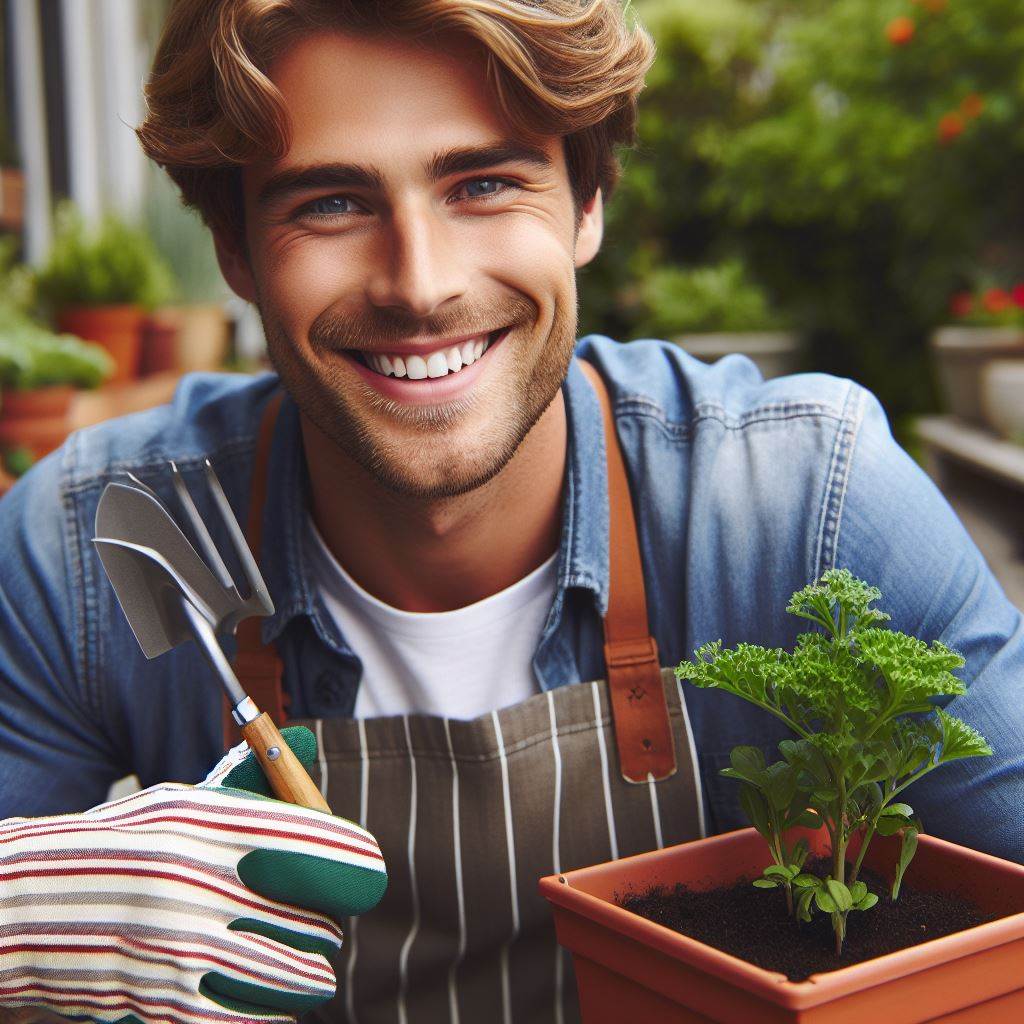
Harvesting and enjoying the fruits of your container garden
Knowing when to harvest
Harvesting your vegetables at the right time is crucial to ensure maximum flavor and nutritional value.
Here are some indicators to help you determine when your veggies are ready to be picked:
- Color: Look for vibrant, fully-developed colors on your produce. For example, ripe tomatoes should have a deep red hue.
- Texture: Gently touch your vegetables and feel for firmness. If they feel soft or mushy, they might be overripe.
- Size: Different vegetables have different ideal sizes for harvest. Research the specific varieties you are growing to know the appropriate size to pick them.
- Taste test: Sometimes, the best way to determine if a vegetable is ready for harvest is by giving it a taste. This method works well with leafy greens and herbs.
Tips for maximum yield
To maximize your harvest, follow these tips and techniques:
- Regular harvesting: Continuously pick ripe produce to encourage more growth. Leaving overripe veggies on the plant will hinder further development.
- Pruning: Trim excess foliage to redirect the plant’s energy towards fruit production. This helps improve airflow and prevents overcrowding.
- Fertilization: Use organic fertilizers specific to container gardening to provide essential nutrients for increased yield.
- Watering: Keep the soil consistently moist, but avoid over-watering, as it can lead to root rot. A drip irrigation system can help maintain proper moisture levels.
- Pollination: Some vegetables, like tomatoes and peppers, require pollinators such as bees to set fruit. Consider attracting pollinators to your garden using native plants or creating a bee-friendly environment.
Delicious recipes to try with your homegrown veggies
Once you’ve harvested your bountiful container garden, it’s time to savor the flavors with these delectable recipes:
- Caprese Salad: Combine freshly harvested tomatoes, basil leaves, and mozzarella cheese with a drizzle of balsamic vinegar and olive oil for a refreshing summer salad.
- Stir-fried Veggies: Sauté your homegrown peppers, carrots, and snap peas with garlic and sesame oil for a quick and healthy stir-fry dish.
- Roasted Root Vegetables: Toss freshly harvested beets, carrots, and potatoes with olive oil, salt, and herbs. Roast them in the oven until golden and tender.
- Homemade Salsa: Dice your ripe tomatoes, onions, and jalapenos, then mix them with lime juice, cilantro, and a pinch of salt for a zesty salsa to enjoy with tortilla chips.
- Garden Fresh Pizza: Top your homemade pizza dough with sliced garden vegetables like zucchini, bell peppers, and cherry tomatoes. Sprinkle with cheese and bake until crispy.
By following these harvesting tips and trying out these delicious recipes, you’ll experience the joy of container gardening from planting to enjoying the fruits of your labor.
Happy harvesting and bon appétit!
Read: Watering Wisdom: How Much is Too Much?
Troubleshooting common container gardening issues
Overwatering and drainage problems
- Make sure your containers have proper drainage holes to prevent water from pooling.
- Water your plants only when the top inch of soil feels dry, and avoid soggy soil.
- Use well-draining soil mix to promote proper water drainage.
- Consider using self-watering containers or adding a layer of pebbles at the bottom of the pot.
- Avoid overwatering by using a watering can with a narrow spout to control water flow.
- Monitor weather conditions and adjust watering frequency accordingly.
Nutrient deficiencies and excesses
- Regularly fertilize your container plants to provide essential nutrients.
- Use organic and slow-release fertilizers to avoid nutrient excesses.
- Identify nutrient deficiencies by observing plant symptoms such as yellowing leaves or stunted growth.
- Adjust the fertilizer ratio based on the specific needs of different plants.
- Consider using compost or organic matter to naturally enrich the soil.
- Do a soil test to determine the nutrient levels and amend accordingly.
Dealing with pests and diseases
- Inspect your plants regularly to identify and remove pests like aphids, mealybugs, or caterpillars.
- Use organic pest control methods such as neem oil, insecticidal soaps, or companion planting.
- Keep your container gardening area clean and free from debris to prevent pests and diseases.
- Rotate your crops to minimize the risk of plant-specific diseases and pests.
- Introduce beneficial insects like ladybugs or praying mantises to control pest populations.
- If necessary, consult with a local garden center or extension service for specific pest and disease control recommendations.
By being aware of these common issues and using proper maintenance techniques, you can overcome many challenges in container gardening.
Remember to observe your plants closely, make necessary adjustments, and enjoy the rewards of a thriving container garden. Happy gardening!
Success stories and container gardening inspiration
Sharing stories of successful container gardens
- Jessica transformed her balcony into a thriving vegetable garden, growing tomatoes, peppers, and herbs.
- Mike started his container garden on a small patio and now supplies his family with fresh lettuce and spinach.
- Sarah’s rooftop garden is a green oasis in the city, filled with colorful flowers and fruitful vegetables.
- Mark, a beginner gardener, successfully grew carrots, radishes, and green beans in his small apartment balcony.
- Amy’s vertical container garden not only saved space but also produced a bountiful harvest of cucumbers and strawberries.
Unique and creative container garden ideas
- Use wooden crates or old tires as unconventional containers for planting various vegetables or flowers.
- Repurpose mason jars into herb pots, creating a charming and efficient way to have fresh herbs at hand.
- Try vertical gardening by hanging planters on walls or trellises, maximizing space and adding visual appeal.
- Convert old watering cans or teapots into whimsical planters, adding a touch of creativity to your garden.
- Incorporate colorful and decorative pots to enhance the visual appeal of your container garden.
Encouraging readers to share their own experiences
- We want to hear your container gardening success stories and unique ideas!
- Share pictures of your thriving container gardens on our social media platforms.
- Tell us about the challenges you overcame and the joy you experienced while growing your own food.
- Inspire others with your container gardening journey and help them get started on their own.
- Together, let’s create a community of container gardeners and spread the joy of growing veggies anywhere.
In essence, success stories and creative ideas can provide inspiration and motivation for aspiring container gardeners.
By sharing stories of successful container gardens, unique and creative garden ideas, and encouraging readers to share their own experiences, we can build a community of like-minded individuals who are passionate about growing their own food in any space available.
Container gardening is a versatile and rewarding activity that allows everyone to enjoy the benefits of fresh produce while beautifying their surroundings.
So let’s start sharing our stories, inspiring others, and growing our own veggies anywhere!
Conclusion and Final Thoughts
Recap of the Benefits of Container Gardening
Container gardening offers numerous advantages. It allows you to grow vegetables anywhere, be it a small apartment balcony or a spacious backyard.
The flexibility it provides in terms of mobility and space utilization is unparalleled.
Moreover, it reduces the risk of soil-borne diseases and pests.
Encouragement to Start a Container Garden
With container gardening, anyone can become a successful gardener, regardless of their experience or available space.
By starting a container garden, you can enjoy the satisfaction of growing your own fresh and organic vegetables.
The joy of harvesting and cooking with homegrown produce is incomparable.
Closing Remarks and Call to Action
In a nutshell, container gardening is a fantastic way to grow veggies anywhere.
It not only offers numerous benefits but also brings immense joy and fulfillment to your life.
So why wait? Take the first step and start your container garden today.
You won’t regret the decision to transform your space into a green oasis of fresh and healthy produce.
Happy gardening!
Showcase Your Farming Business
Publish your professional farming services profile on our blog for a one-time fee of $200 and reach a dedicated audience of farmers and agribusiness owners.
Publish Your Profile
